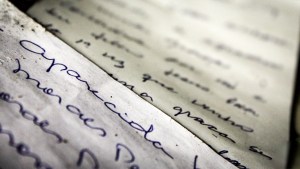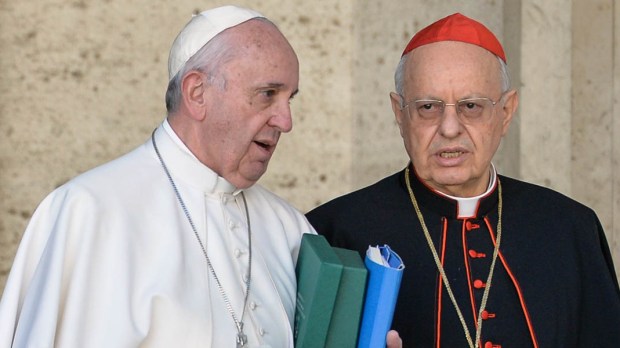Cardinal Lorenzo Baldisseri wasn’t a cardinal in 2013, at the time of the last papal election. But because he was the secretary of the College of Cardinals, he did have a role in the election of the next Successor of Peter.
Those days of March 12 and 13, 2013, are unforgettable for the 77-year-old cardinal from Pisa.
We all know the official account of those days: the protocol, the votes of the cardinal electors enclosed in the conclave, the black smoke, the wait … the explosion of joy from the people in the Square when they saw that famous “white smoke.” But, when you are an eyewitness to the story, there are different twists and turns.
During the days of the conclave, Cardinal Baldisseri, still a bishop at the time, lived at the Domus Sanctae Marthae (Casa Santa Marta) where Francis lives now.
He already knew Cardinal Jorge Bergoglio, from the general conference of the Latin American episcopate at Aparecida, where Bergoglio had played a leading role.

Read more:
The Aparecida Document: What you need to know
By statute, at the moment of the conclave the secretary of the College of Cardinals also becomes the secretary of the conclave, and therefore, Baldisseri says, “I participated right from the pre-conclave preparations, before an assembly of 115 cardinals, among whom was also Bergoglio. After that phase, the phase of the closed conclave began.”
“As I was saying,” Baldisseri continues, “I was at Santa Marta, the residence of the electors. For the cardinals, the rooms were distributed randomly, but I already had mine! It all lasted for two nights. The announcement took place on the second evening.”
Let’s let Cardinal Baldisseri recount the events to us directly.
* * *
Since I was the secretary of the conclave, I went in and out to hand out the ballots, together with Monsignor Guido Marini. The cardinals voted, and handed me the ballots, which I then had to burn.
The white smoke rises: What happens inside the Sistine Chapel?
When the white smoke went up, I stayed inside the Sistine Chapel, and went under the painting of the Last Judgment. My role was similar to that of a notary, keeping a record of everything that happened. I was there, dressed as a prelate, an archbishop. I was there when the acting dean, Cardinal Giovanni Battista Re, officially called the one who was elected, to ask him the prescribed questions.
The questions asked the pope-elect
The pope-elect was asked if he accepted the responsibility. “Yes, I accept, and I take the name Francis,” the new pope replied. After this, the newly elected pope went into the so-called “room of tears” to dress himself in white.
The story inside the story
In that lapse of time, there was another ceremony. Two servants arrived, who set up a table and chair in the middle of the room (the Sistine Chapel), below the altar, right under the Last Judgment, and they called me to fill out the official document. And I had to write the (given) name of the pope-elect in Latin, then the name he had chosen, and the date, and sign it. Monsignor Marini then countersigned it.
The pope’s first steps
Shortly after, the pope returned, dressed in white, and the master of ceremonies was carrying a silver plate on which there was a red skull cap. The pope then came forward and arrived at the middle of the Sistine Chapel, under the Last Judgment. In the meantime, the table and chair which I had used as a desk while writing a record of the election had been removed.
Pope Francis’ first act
According to tradition, the new pope should have taken his place in the elevated area in front of the altar, where there was a large upholstered chair. But he didn’t go up there; he remained down below, like the rest, to greet the cardinals. The cardinals were called to pay obedience to him, and that took an hour, because all 115 of the prelates had to pass one by one before the pope and declare their obedience to him.
My act of reverence, and an unexpected gesture from the pope
When it was coming to an end, and there were only about 15 cardinals to go, the door of the Sistine Chapel opened, and the elderly cardinals started entering to greet him. And right at that moment, I said to myself: I am here, the line of cardinal electors is over, and so I got in line too so that I could make an act of reverence. When my turn arrived, I knelt before the pope. Then, he took the red skull cap and put it on my head. The cardinals who were there applauded, and I felt embarrassed. But that was a gesture that pre-announced my promotion to the cardinalate. But, my investiture as a cardinal happened a year later. And when I was nominated as a cardinal, the pope told me, “I made you wait a long time!”
And to tell the truth, when I go see the pope, I meet him at Santa Marta, and I feel at home.
~
This article is translated and adapted from Aleteia’s Italian edition.

